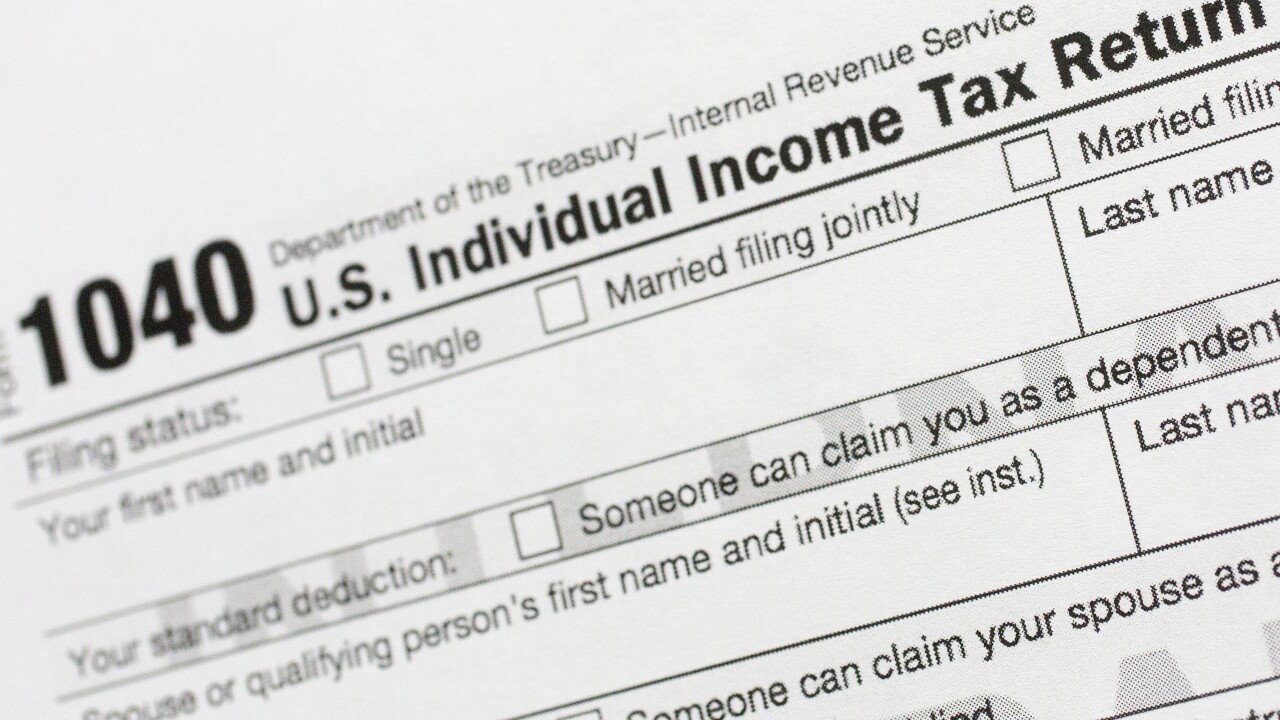Home>Finance>How To Transfer Social Security Benefits To Another State


Finance
How To Transfer Social Security Benefits To Another State
Published: November 24, 2023
Learn how to transfer your social security benefits to another state and ensure your financial stability. Get expert advice on managing your finances effectively.
(Many of the links in this article redirect to a specific reviewed product. Your purchase of these products through affiliate links helps to generate commission for LiveWell, at no extra cost. Learn more)
Table of Contents
- Introduction
- Eligibility for Transferring Social Security Benefits
- Steps to Transfer Social Security Benefits to Another State
- Required Documents for Transferring Social Security Benefits
- Transferring Social Security Disability Benefits to Another State
- Transferring Social Security Retirement Benefits to Another State
- Transferring Social Security Survivor Benefits to Another State
- Potential Challenges in Transferring Social Security Benefits to Another State
- Frequently Asked Questions (FAQs)
- Conclusion
Introduction
Transferring Social Security benefits to another state can be a crucial consideration for individuals who are planning to move or have recently relocated. Whether it’s retirement, disability, or survivor benefits, understanding the process of transferring these benefits to a new state is essential to ensure uninterrupted financial support.
The Social Security Administration (SSA) is responsible for administering and disbursing Social Security benefits to eligible individuals. While Social Security benefits are federal, the process of transferring them to a new state involves certain steps and documentation specific to each type of benefit.
Relocating to a different state should not jeopardize your entitlement to Social Security benefits. By following the proper procedures and meeting the necessary requirements, you can efficiently transfer your benefits and continue to receive the financial support you need.
In this article, we will explore the eligibility criteria, steps, and required documentation for transferring Social Security benefits to another state. We will also provide guidance specific to transferring disability, retirement, and survivor benefits. Finally, we will address potential challenges and frequently asked questions regarding the process.
Whether you are planning a move or have recently relocated, understanding the process of transferring Social Security benefits is vital. Let’s dive into the details and ensure a seamless transition of your benefits to your new state of residence.
Eligibility for Transferring Social Security Benefits
Before considering transferring your Social Security benefits to another state, it is important to determine your eligibility. The eligibility criteria may vary depending on the type of benefit you are receiving. Let’s take a closer look at the eligibility requirements for transferring Social Security benefits:
- Social Security Retirement Benefits: To be eligible for transferring retirement benefits to another state, you must be eligible for and currently receiving Social Security retirement benefits.
- Social Security Disability Benefits: Individuals who receive Social Security disability benefits are also eligible for transferring their benefits to another state.
- Social Security Survivor Benefits: If you are receiving survivor benefits as a dependent or widow(er), you may be eligible to transfer these benefits to another state.
In addition to meeting the general eligibility requirements for each type of benefit, there are specific factors to consider when transferring Social Security benefits to another state. These include:
- Residency Requirements: Check if the state you are moving to has any residency requirements for receiving Social Security benefits. Some states may have specific residency rules that may affect your eligibility for benefits.
- Citizenship and Immigration Status: It is important to have proper citizenship or immigration status to be eligible for Social Security benefits. Ensure that your status is valid and up to date before initiating the transfer process.
- Proof of Eligibility: You may need to provide proof of your eligibility to receive Social Security benefits, such as your Social Security number, birth certificate, or other identifying documents. Make sure you have these documents readily available.
Keep in mind that eligibility requirements and transfer processes may vary depending on your specific circumstances. It is recommended to consult with the Social Security Administration or seek professional advice to confirm your eligibility for transferring Social Security benefits and understand any additional requirements.
Now that you have a better understanding of the eligibility criteria, let’s explore the step-by-step process of transferring Social Security benefits to another state.
Steps to Transfer Social Security Benefits to Another State
Transferring Social Security benefits to another state involves a few essential steps to ensure a smooth transition. While the specific process may vary depending on the type of benefit you receive, the following general steps will guide you through the transfer process:
- Notify the Social Security Administration (SSA): As soon as you know you are moving to another state, inform the SSA about your relocation. You can contact your local SSA office by phone or visit their website to find the necessary contact information.
- Update your Address: Provide the SSA with your new address details. This will ensure that all future correspondence, including benefit payments and important updates, are sent to the correct address.
- Confirm State Eligibility: Research and confirm if your new state of residence is eligible for receiving Social Security benefits. Each state may have specific rules and requirements that could impact your benefits.
- Review Benefit Amount: Depending on your new state of residence, the amount of benefits you receive may change. Some states have different cost of living adjustments that could impact the calculation of your benefit amount. Confirm this with the SSA or consult with a financial advisor.
- Update Direct Deposit Information: If you receive your benefits through direct deposit, update your banking information with the SSA. Provide them with your new bank account details to ensure a seamless transfer of your benefit payments.
- Transfer Health Insurance: If you are enrolled in Medicare, notify the Social Security Administration about your change of address. This will ensure that your Medicare coverage is transitioned smoothly to your new state.
- Gather Required Documentation: Depending on the type of benefit you receive, you may need to provide additional documentation. This could include proof of residency, citizenship, or any other relevant documents. Check with the SSA to determine the specific documentation requirements.
- Submit Documentation: Once you have gathered all the necessary documents, submit them to the SSA for review. Make sure to keep copies for your records.
- Follow Up: If you do not receive any confirmation or acknowledgement from the SSA within a reasonable time, follow up with them to ensure that your benefits transfer is being processed.
It’s important to note that the process of transferring Social Security benefits to another state can take some time. It is advised to start the process well in advance of your intended move to avoid any disruptions in benefit payments.
Now that you know the steps involved in transferring Social Security benefits, let’s examine the required documents for the transfer process.
Required Documents for Transferring Social Security Benefits
When transferring your Social Security benefits to another state, you will need to provide certain documentation to the Social Security Administration (SSA) to support your request. The specific documents required may vary depending on the type of benefit you receive. Here are some commonly required documents:
- Proof of Identity: You will need to provide a valid government-issued identification document such as a driver’s license, passport, or state ID card to verify your identity.
- Social Security Number: Make sure to have your Social Security number (SSN) readily available. This is a crucial piece of information required for any interaction with the SSA.
- Proof of Residency: You may be asked to provide proof of your residency in the new state. This can be a utility bill, lease agreement, or any other document that shows your name and residential address.
- Proof of Citizenship or Immigration Status: If you are a U.S. citizen, you will need to provide your birth certificate or U.S. passport. If you are a non-citizen, you may need to provide your immigration documents, such as a green card or work permit.
- Bank Account Information: If you receive your benefits through direct deposit, you will need to provide the SSA with your new bank account details, including the routing number and account number.
- Proof of Relationship (for Survivor Benefits): If you are transferring survivor benefits, you may be required to provide documentation to establish your relationship with the deceased, such as a marriage certificate, birth certificate, or adoption papers.
- Medical Records (for Disability Benefits): If you are transferring disability benefits, you may need to provide medical records or reports that support your disability claim.
- Previous Benefit Statements: It is recommended to have copies of your previous Social Security benefit statements on hand. These statements can help the SSA verify your benefit history and ensure accurate transfer of benefits.
It is important to note that the SSA may require additional documentation depending on the specific circumstances of your case. To ensure a smooth transfer of your benefits, contact your local SSA office or visit their website to confirm the exact documents you need to provide.
Gathering and organizing these documents in advance will help expedite the transfer process and avoid unnecessary delays. By providing the necessary documentation, you can ensure that your Social Security benefits are transferred to your new state without any interruptions.
Now, let’s explore the process of transferring specific types of Social Security benefits to another state.
Transferring Social Security Disability Benefits to Another State
For individuals receiving Social Security Disability benefits and planning to move to another state, the process of transferring these benefits is similar to other types of Social Security benefits. However, there are a few considerations specific to disability benefits. Let’s delve into the steps involved in transferring Social Security Disability benefits to another state:
- Notify the Social Security Administration (SSA): Inform the SSA about your impending move and provide them with your new address. You can contact your local SSA office or visit their website to update your information.
- Confirm Eligibility: Ensure that your new state of residence accepts Social Security Disability benefits. Each state has different disability benefit programs, and it is important to verify their acceptance of out-of-state transfers.
- Contact the New State’s Disability Agency: Get in touch with the disability agency in your new state to understand their requirements and procedures for receiving disability benefits. They can provide guidance on any additional forms or documents needed for the transfer.
- Medical Records: Request copies of your medical records from your healthcare providers. These records will be required to establish and continue your disability claim in the new state.
- Submit Documentation: Provide the SSA and the disability agency in your new state with the necessary documentation, including your medical records, proof of identity, and any other required forms or information.
- Follow Up: Stay in communication with the SSA and the disability agency to ensure the process of transferring your disability benefits is progressing smoothly. Address any additional requests for information promptly.
- Transfer Health Insurance: If you have Medicare coverage, inform the SSA about your change of address. This will ensure a seamless transition of your healthcare coverage to your new state.
Transferring Social Security Disability benefits may take some time, so it’s essential to start the process as early as possible. Keeping the SSA and the disability agency informed and providing them with all necessary documentation will help facilitate a smooth transfer of your benefits.
If you have any concerns or questions about the process, it is advisable to consult with a representative from the SSA or a disability attorney for personalized guidance.
Next, let’s explore the process of transferring Social Security Retirement benefits to another state.
Transferring Social Security Retirement Benefits to Another State
Transferring Social Security Retirement benefits to another state is a relatively straightforward process. Whether you are already receiving retirement benefits or planning to apply for them, here are the steps involved in transferring your benefits to your new state:
- Notify the Social Security Administration (SSA): Inform the SSA about your upcoming move. This can be done by contacting your local SSA office or visiting their website to update your address and provide them with your new contact information.
- Confirm Eligibility: Ensure that your new state of residence accepts Social Security Retirement benefits. While Social Security benefits are federal, some states have additional rules or regulations that may affect your benefits.
- Update Direct Deposit: If you receive your benefits through direct deposit, update your banking information with the SSA. Provide them with your new bank account details, including the routing number and account number, to ensure a seamless transfer of your benefit payments.
- Review Benefit Amount: It’s important to be aware that your benefit amount may change based on your new state’s cost of living adjustments. Some states have different calculations for determining benefit amounts, so it’s advisable to review this with the SSA or consult a financial advisor.
- Submit Documentation: The SSA may require documentation to process your request for transferring your retirement benefits. This typically includes proof of identity, such as a driver’s license or passport.
- Follow Up: Stay in regular communication with the SSA to ensure the progress of your benefit transfer. If you do not receive any confirmation or updates within a reasonable time, follow up with the SSA to ensure that your transfer is being processed.
By following these steps, you can transfer your Social Security Retirement benefits to your new state without interruption. It is important to initiate the transfer process well in advance of your move to ensure a smooth transition and avoid any delays in benefit payments.
If you have any specific questions or concerns about transferring your retirement benefits, it is recommended to contact the SSA or seek professional guidance to ensure a seamless transition.
Next, let’s explore the process of transferring Social Security Survivor benefits to another state.
Transferring Social Security Survivor Benefits to Another State
Transferring Social Security Survivor benefits to another state is an important consideration for individuals who have experienced the loss of a loved one and are planning to move. The process of transferring these benefits involves specific steps to ensure a seamless transition. Here’s what you need to know:
- Notify the Social Security Administration (SSA): Contact the SSA as soon as possible to inform them about your move and provide your new address and contact information. You can do this by visiting their website or contacting your local SSA office.
- Confirm Eligibility: Ensure that your new state of residence accepts Social Security Survivor benefits. While these benefits are federal, some states may have additional rules or regulations that could affect your eligibility or benefit amount.
- Gather Required Documentation: When transferring Survivor benefits, you may need to provide documents to establish your relationship with the deceased. This could include marriage certificates, birth certificates, or adoption papers.
- Submit Required Documentation: Provide the SSA with the necessary documentation to support your claim for Survivor benefits. This will help initiate the transfer process and ensure that your benefits continue to be disbursed without interruption.
- Update Direct Deposit Information: If you are receiving your Survivor benefits through direct deposit, update your banking information with the SSA. Provide them with the new bank account details to ensure a seamless transfer of your benefit payments.
- Follow Up: Stay in communication with the SSA to ensure the progress of your benefit transfer. If you do not receive any confirmation or updates within a reasonable time, follow up with the SSA to ensure that your transfer is being processed.
Transferring Social Security Survivor benefits may take some time, so it’s advisable to initiate the process well in advance of your move. By providing the necessary documentation and staying in touch with the SSA, you can ensure a smooth transfer and uninterrupted receipt of your Survivor benefits in your new state of residence.
If you have any specific questions or concerns about transferring Survivor benefits, don’t hesitate to contact the SSA or consult with a professional to help guide you through the process.
Now, let’s discuss some potential challenges you may encounter when transferring Social Security benefits to another state.
Potential Challenges in Transferring Social Security Benefits to Another State
While transferring Social Security benefits to another state is generally a smooth process, there are some potential challenges that you may encounter along the way. These challenges can vary depending on your specific circumstances and the type of benefit you receive. Here are some key challenges to be aware of:
- Residency Requirements: Some states have specific residency requirements for receiving Social Security benefits. It is important to research and understand the eligibility criteria in your new state to ensure that you meet their residency rules.
- Benefit Amount Changes: Depending on your new state of residence, the amount of your Social Security benefits may change. States have different calculations for determining benefit amounts, including cost of living adjustments. Be prepared for potential fluctuations in your benefit payments.
- Administrative Delays: The transfer process for Social Security benefits can take time. Administrative delays can occur due to high caseloads or procedural requirements. It’s important to be patient and proactive in following up with the Social Security Administration (SSA) to ensure the progress of your benefit transfer.
- Additional Documentation: Depending on your circumstances, you may be required to provide additional documentation when transferring benefits. This could include proof of residency, citizenship, or relationship to the deceased (for Survivor benefits). Gather all necessary documents in advance to minimize delays in the transfer process.
- Medicare Coverage: If you are enrolled in Medicare, transferring your health insurance coverage to your new state should be part of the process. Notify the SSA about your change of address to ensure a smooth transition of your Medicare coverage.
- Communication and Follow-up: Effective communication with the SSA is crucial during the transfer process. Stay in touch with the SSA, follow up on any requested information or documentation, and ensure that all necessary updates are made to your contact information.
Overcoming these challenges requires proactive planning and staying informed throughout the transfer process. It is recommended to reach out to the SSA for guidance and clarification on any specific challenges you may face. Consulting with a financial advisor or seeking professional assistance can also help navigate these challenges and ensure a successful transfer of your Social Security benefits.
Now that we have explored some potential challenges, let’s move on to answer some frequently asked questions about transferring Social Security benefits.
Frequently Asked Questions (FAQs)
Here are some commonly asked questions about transferring Social Security benefits to another state:
- Can I transfer my Social Security benefits to another state?
- Do I need to reapply for Social Security benefits when I move to a new state?
- How long does it take to transfer Social Security benefits to another state?
- Will my benefit amount change when I transfer my Social Security benefits to another state?
- What happens to my Medicare coverage when I transfer my Social Security benefits to another state?
- What if I have additional questions or need assistance with transferring my Social Security benefits?
Yes, you can transfer your Social Security benefits to another state. The process involves notifying the Social Security Administration (SSA) about your move and providing them with your new address. However, it’s important to ensure that your new state of residence accepts Social Security benefits.
No, you do not need to reapply for Social Security benefits when you move to a new state. Simply notify the SSA about your move and provide them with your new address and contact information. Your benefits will continue in the new state, as long as you meet the eligibility criteria.
The time it takes to transfer Social Security benefits to another state can vary. It is recommended to initiate the transfer process as soon as you know about your move. While there may be some administrative delays, staying in communication with the SSA and providing all necessary documentation can help expedite the process.
Depending on your new state of residence, your benefit amount may change. Some states have different calculations and cost of living adjustments that may impact your benefit payments. It is advisable to review this with the SSA or consult a financial advisor to understand how your benefits may be affected.
If you are enrolled in Medicare, it’s important to notify the SSA about your change of address to ensure a smooth transition of your healthcare coverage. This will ensure that your Medicare benefits continue uninterrupted in your new state.
If you have additional questions or require assistance with transferring your Social Security benefits, it is recommended to contact the SSA directly. They can provide personalized guidance and address any concerns you may have. Additionally, seeking assistance from a financial advisor or Social Security attorney can provide further clarity and support.
These FAQs cover some of the common questions related to transferring Social Security benefits to another state. If you have specific inquiries or concerns, it’s best to contact the SSA or consult with a professional to receive the most accurate and up-to-date information.
Now, let’s summarize the key points covered in this article.
Conclusion
Transferring Social Security benefits to another state is an important process to ensure uninterrupted financial support when you move or have relocated. By following the necessary steps and providing the required documentation, you can smoothly transfer your benefits and continue receiving the support you need in your new state of residence.
Throughout this article, we discussed the eligibility criteria for transferring Social Security benefits and outlined the specific steps involved in transferring disability, retirement, and survivor benefits. We also explored potential challenges that may arise during the transfer process and provided answers to commonly asked questions.
It is crucial to notify the Social Security Administration (SSA) of your move and update your contact information. Confirm the eligibility requirements in your new state, review potential changes in benefit amounts, and gather the necessary documentation to support your transfer request. Additionally, staying in communication with the SSA and following up on your transfer progress will help ensure a smooth transition.
If you have any specific concerns or questions about transferring your Social Security benefits, it is advisable to contact the SSA directly or seek professional assistance. They can provide personalized guidance tailored to your unique circumstances.
Remember, initiating the transfer process early and staying organized throughout the relocation can help prevent any disruptions in your Social Security benefits. By taking the necessary steps and staying informed, you can experience a seamless transfer of your benefits and continue to receive the financial support you need in your new state of residence.














